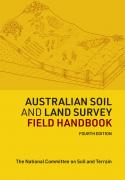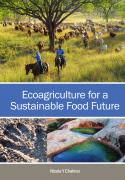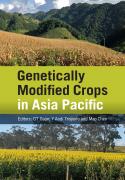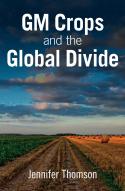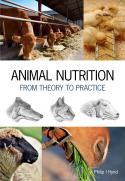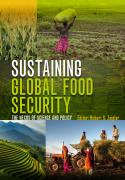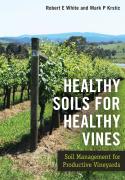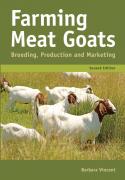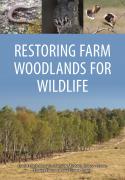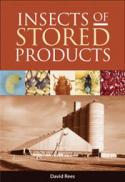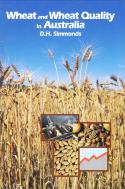Precision Agriculture (PA) is an approach to managing the variability in production agriculture in a more economic and environmentally efficient manner. It has been pioneered as a management tool in the grains industry, and while its development and uptake continues to grow amongst grain farmers worldwide, a broad range of other cropping industries have embraced the concept. This book explains general PA theory, identifies and describes essential tools and techniques, and includes practical examples from the grains industry.
Readers will gain an understanding of the magnitude, spatial scale and seasonality of measurable variability in soil attributes, plant growth and environmental conditions. They will be introduced to the role of sensing systems in measuring crop, soil and environment variability, and discover how this variability may have a significant impact on crop production systems. Precision Agriculture for Grain Production Systems will empower crop and soil science students, agronomy and agricultural engineering students, as well as agronomic advisors and farmers to critically analyse the impact of observed variation in resources on crop production and management decisions.
- Page 1Abstract
Precision Agriculture (PA) is a now a term used throughout agricultural systems worldwide, but what is meant by Precision Agriculture? This introductory chapter provides a background to the principal philosophy and goals of a PA management strategy, the evolution of PA and some of the steps required to adopt PA in grain cropping systems. It provides a stepping-stone to subsequent chapters that will investigate the theories, technologies and methodologies behind the adoption of PA within grain production systems.
- Page 13Abstract
Satellite-based navigation systems are truly the enabling technology of PA. They provide a relatively simple and robust technique for identifying any location on the Earth’s surface or, in the case of aircraft, relative to the surface. This permits agricultural and environmental operations to be geo-referenced and spatially analysed. A wide range of satellite-based navigation and geo-location tools are available to suit different agronomic situations from point crop/soil sampling to autonomous vehicle guidance.
- Page 31Abstract
The major agricultural machinery brands actively support PA and often include PA hardware systems as standard features on new equipment. Hardware components such as variable-rate controllers and yield monitors are also available from third-party suppliers. Other crop and soil sensing technologies can be easily accessed through consultants or service providers.
- Page 71Abstract
This chapter provides an introduction to the issues that should be considered when purchasing software to perform PA tasks. It deals with generic issues and documents the diversity in relevant software. However, given the rapid evolution of computer software, only brief information is provided on capabilities, with the aim of helping to identify potentially suitable software packages for further investigation. It is strongly recommended that an up-to-date search be conducted when purchasing software. The options discussed here are given as a guide and are as complete as possible, but no endorsement is given to any particular program and nor is there censure of any software not mentioned. The allocation of software to categories is intended as a guide only. Each particular enterprise requires a software program that best suits its needs and budget.
- Page 83Abstract
The navigation, sensing and monitoring technology being used in PA is producing an increasing amount of spatial data for farms. Like traditional financial or production data, it needs to be well-organised, labelled and stored where it can be found. All PA data processing software packages will store data in a manner that suits the operation of the particular software. This is understandable, but as the amount and types of data for a farm begin to build, it is useful to know about the different data types. Establishing and maintaining a separate storage system for the original data files will help the user understand what data is available, ensure the integrity of the data for other analysis, and provide a back-up process.
- Page 91Abstract
Yield monitors are now standard on many new combine harvesters. Instruments that gather data about soil properties and other crop attributes are also widely used. Coupling these monitoring systems with global navigation satellite system (GNSS) technology allows growers to gather location information with their data. However, to make decisions from this information the data needs to be presented in a form that is easy to interpret. Making continuous surface maps helps interpretation by visually displaying patterns of variability in the data. However, if yield, soil or other production maps are incorrectly constructed and/or displayed then making decisions from them may be difficult, or incorrect. There are many options for making and displaying data.
- Page 121Abstract
There is a large list of important components of a farming operation for which it might be useful to have data on the extent of variability. For some components, such as fertiliser quality, farmers rely on outside companies to minimise the variation and so remove the need for substantial on-farm management. Others, such as soil properties, pest and disease outbreaks and crop yield will vary on each farm. Local knowledge about variability in these parts of the farming system can be used to build site-specific crop management (SSCM) strategies. SSCM can be used to identify and treat any areas where yield potential can be improved or to better match input use to the natural variation in yield potential across a field or farm.
- Page 175Abstract
The economics of Precision Agriculture (PA) should be considered in a whole-farm context, just as all other aspects of farm investment. In PA, the analysis of investment outcomes is often confined to a financial balance sheet because it is simple. This approach certainly provides information to support decisions, but it doesn’t encompass the broader notion of whole-farm economics. A full analysis would include the impacts on time and labour use requirements, as well as the environmental, job satisfaction and social outcomes. Such an analysis is difficult to perform using a single measurement scale such as money. Australian farmers should consider the balance sheet approach to PA as a useful tool to be included along with broader considerations when making decisions about the implementation of PA.




